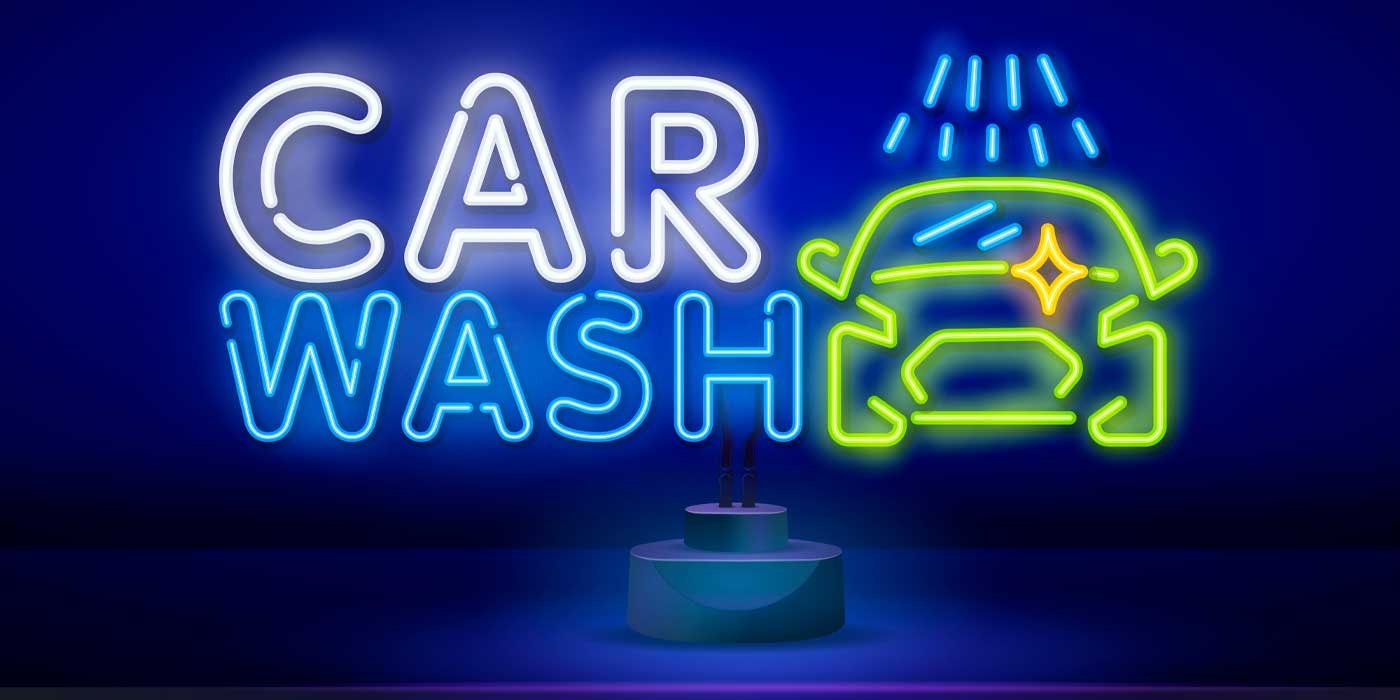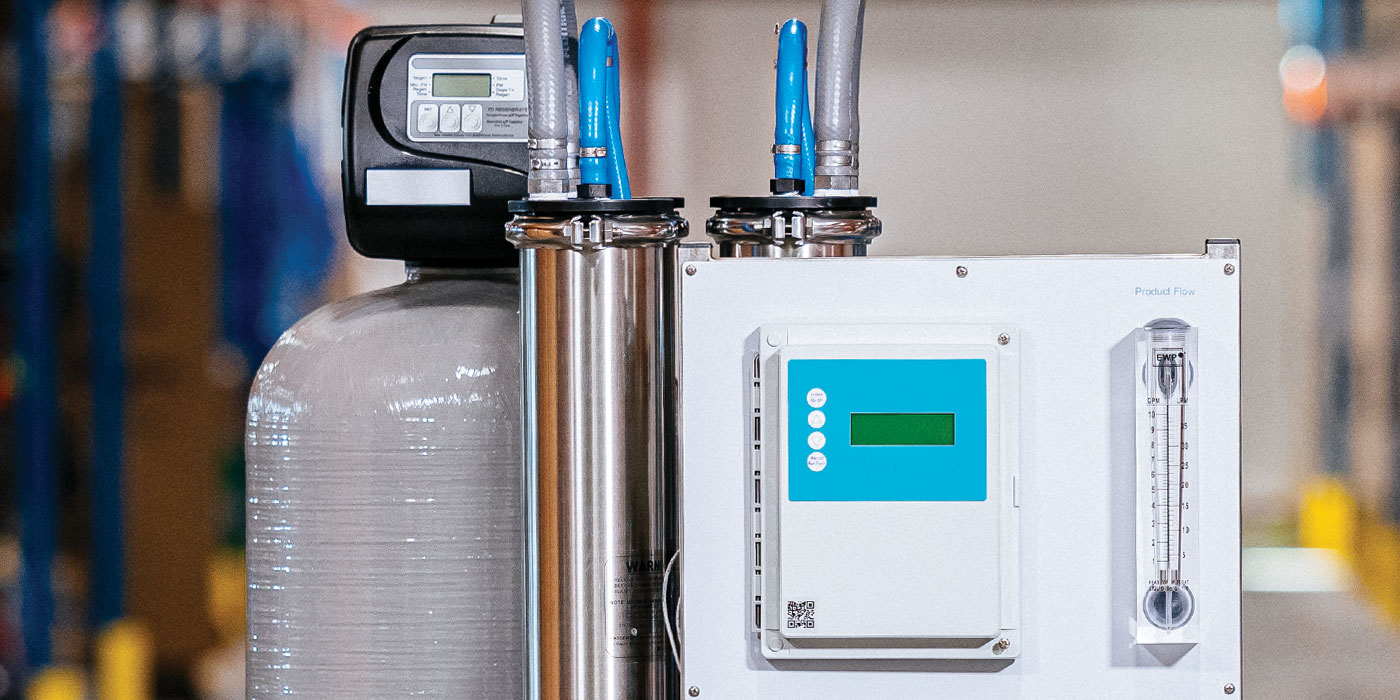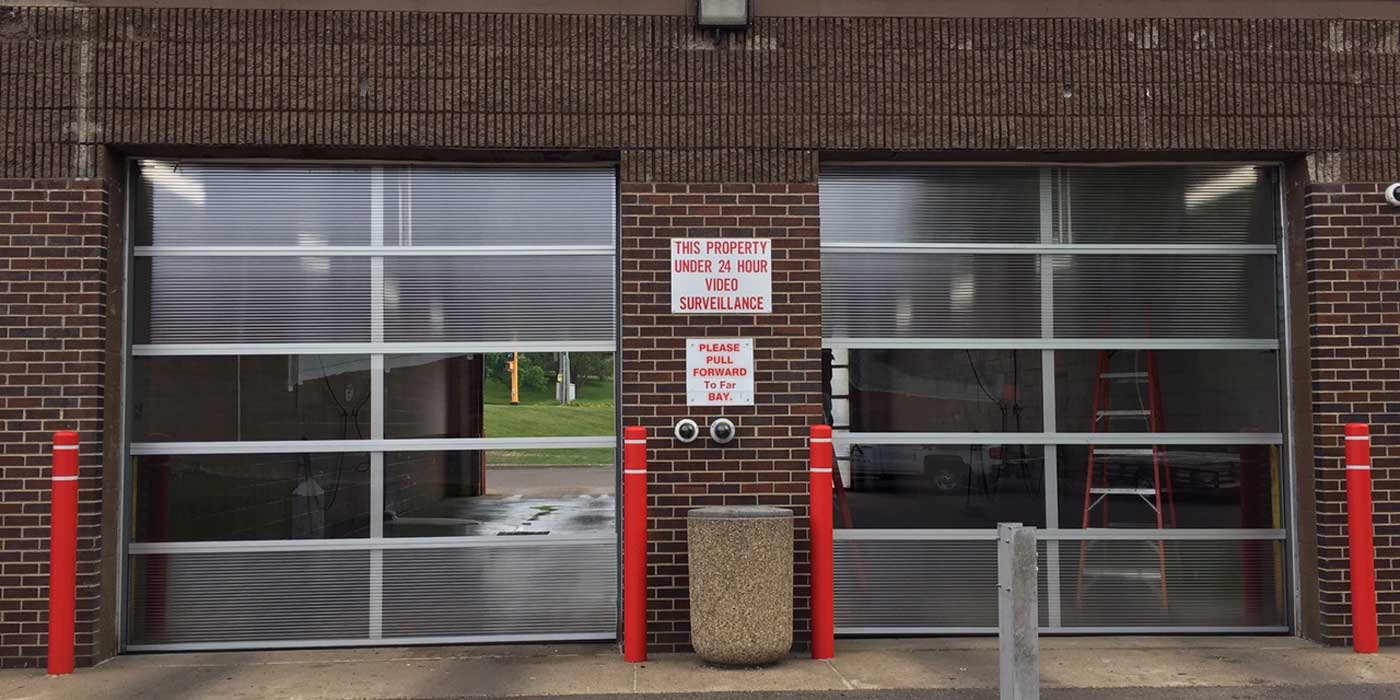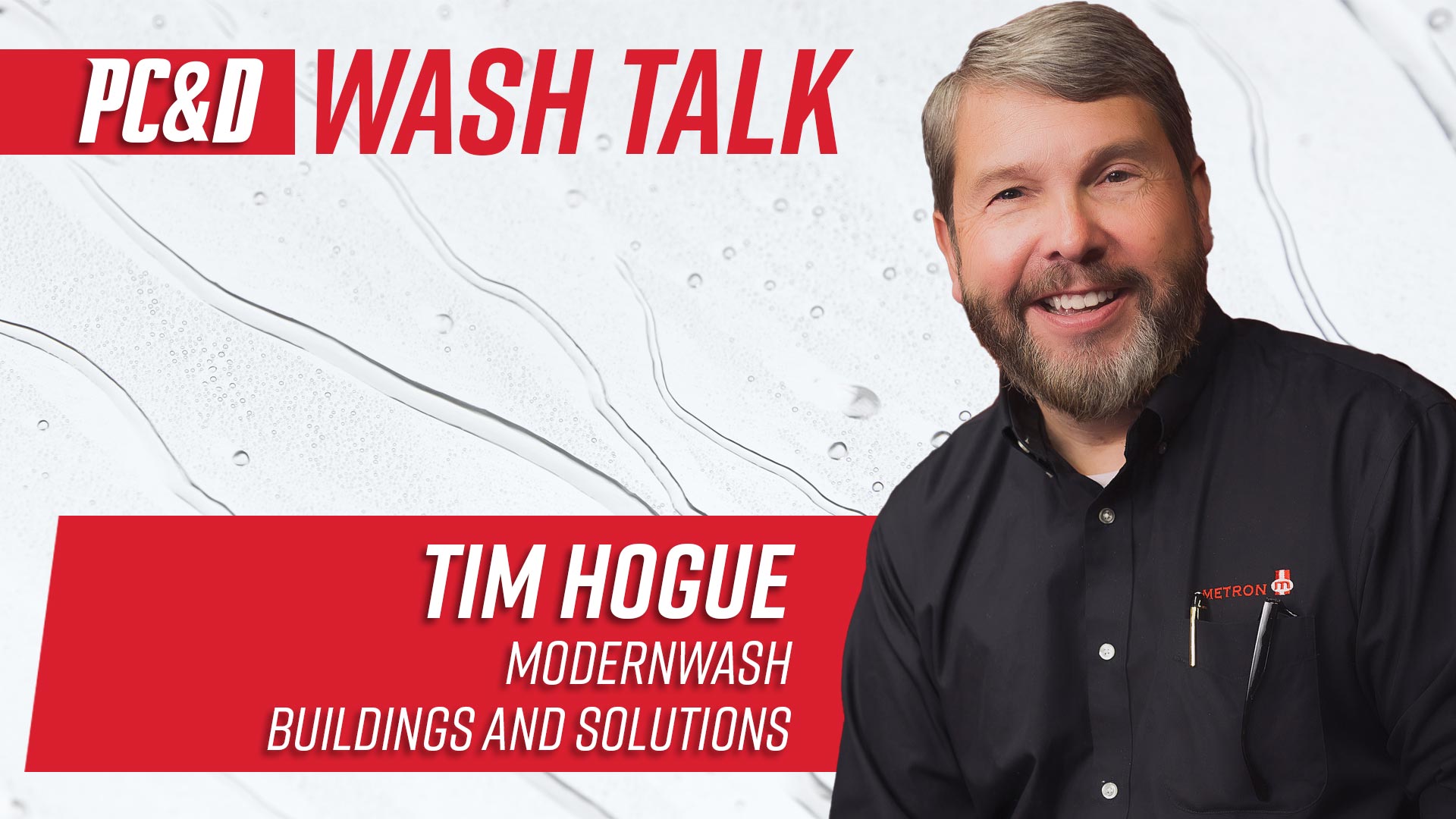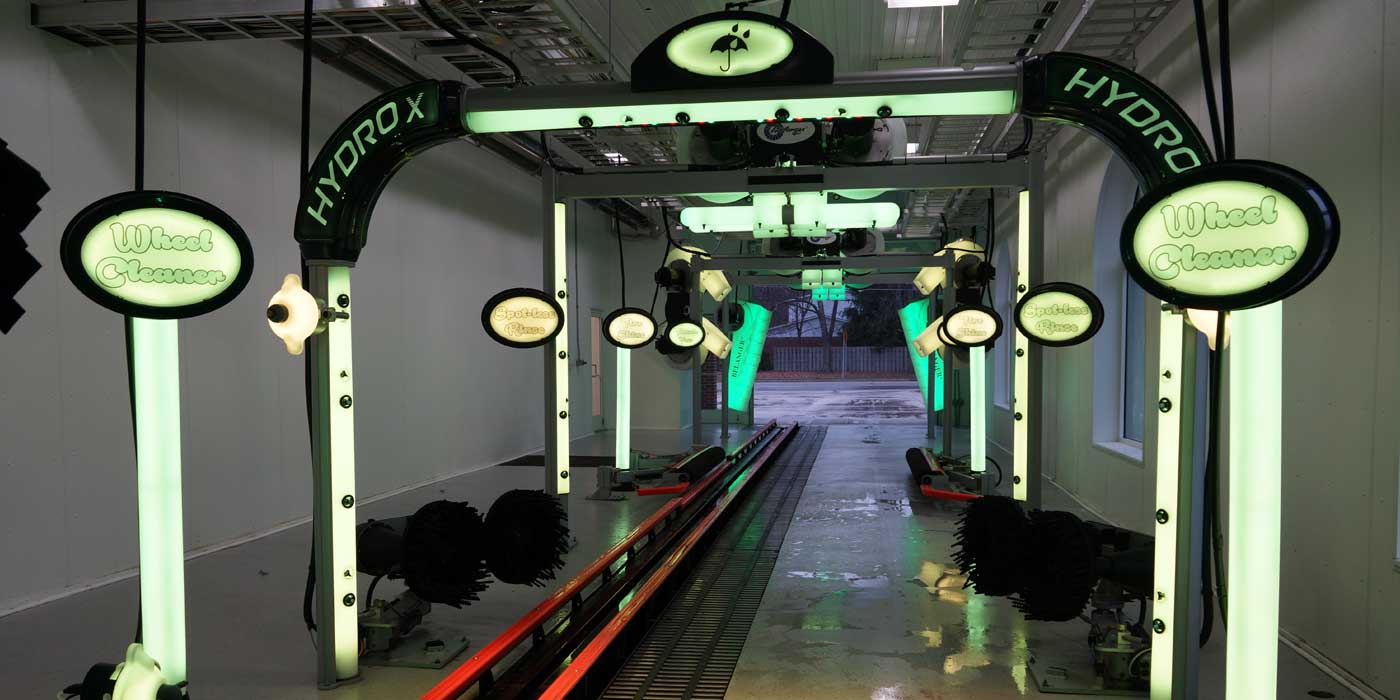For carwash owners or investors, there are a number of factors that must be balanced when constructing and operating an active car care business. Building on a high-traffic highway or intersection is ideal, but the site’s ease of convenience and accessibility must also be considered. Once open, tunnel speed is beneficial, but employee safety and wash results may provide good reasons to slow operation.
One consideration that many carwashes have had to address head-on is the noise that a functioning tunnel can generate. Automated carwashes have never been thought of as quiet operations, and excess noise emission on wash sites can come from multiple sources. Contributors often include customers, vehicles and equipment; additionally, the most common equipment offenders are automated dryers, vacuum stations, rolling doors and moving brushes.
To address these issues, equipment companies have made huge advances in noise suppression technologies. New designs for dryers, doors and other equipment operate at lower decibel levels and can even offer additional benefits, such as lower energy usage. Even so, busy carwashes can still be subject to noise complaints from nearby residents or businesses.
Community-minded operations
As with many factors in the car care industry, site location frequently dictates the importance of noise issues. In some areas, there has been a surge of carwashes built close to residential developments, according to Kevin Baumgartner, president of American Garage Door Supply Inc. With many areas experiencing economic growth and urban sprawl, the best high-traffic locations for carwashes may now be closer and closer to residential neighborhoods. In these communities, noise suppression is critical.
Yet, in less populated areas, noise may not be a huge issue. While noise suppression is still important to many carwashes, it is less crucial in areas where a wash has some space around the location, Baumgartner explains. This space can create a natural noise buffer between the wash and nearby residents.
A carwash noise assessment study shared online by the city of San Jose, California, in 2016, points out some of the common issues communities want addressed when a carwash is operated in a crowded residential area.1 Along with measuring ambient noise levels and communicating the local regulations and codes, the report points out that there are multiple noise-generating sources with automated carwashing. The most common are:
- Pumps
- Compressors
- High-pressure applicators
- Spray nozzles
- Scrubbers
- Dryers.
The potential sources of noise that would not be enclosed in the equipment room trims the offenders list down to the high-pressure applicators and spray nozzle manifolds; scrubber, wrap and brush friction; and the dryer system, the report states.
Timing a tunnel
With so much noise-emitting equipment in a tunnel, it is obvious that suppression efforts should be enacted at open facilities. In washes that do not have closed doors at each opening, the dryers and the wash equipment are obviously going to put out some decibels, Baumgartner notes. Simply by adding fully-automated doors that open and close in cycles, an operator can prevent quite a bit of this noise from escaping.
Typically, carwashes that open and close doors with every wash work like this: A customer arrives, moves through the auto attendant, and then the entrance door opens. Baumgartner states that the auto attendant signals the door, and as the vehicle pulls into the wash, an undercarriage spray or other service can begin. Once the vehicle moves through the doorway and the safety sensors are clear, a timer will signal to close the door at a preset interval.
“Now, both doors are closed, so the wash equipment noise is being contained by the building and the closed doors,” Baumgartner says. “The next step of the process is a little more difficult.”
The exit door is normally close to where the dryer system is located. When a carwash has a roll-over that has a dryer near it, the wash can keep that exit door closed until the last second. Baumgartner notes that this setup will help contain much of the typical dryer noise.
Related: The importance of sound suppression in dryers
“Not all operators time their exit door according to that noise suppression,” Baumgartner continues. “It’s always a timing kind of thing. They don’t want to open the door too late because of door damage, but you don’t want to open it too soon because there is that noise factor.”
Door design
Baumgartner reveals that both styles of doors — polycarbonate and vinyl — do offer noise suppression capabilities. Modern carwash doors that feature polycarbonates actually have a softer panel, so this design absorbs more noise than a hard panel. Further, polycarbonate doors are a good choice for multiple reasons, including corrosion resistance and durability in the carwash environment.
Conventionally designed doors — either a sandwich door or an insulated steel door — do not suppress noise quite as well, according to Baumgartner. These designs feature a harder surface that basically reverberates any noise through the panels. The softer materials included in polycarbonate designs will absorb more of the noise.
One important door design best practice is installing and maintaining proper weather sealing on all carwash doors. This step includes using a brush seal or products other than just the typical nylon vinyl perimeter seal. Baumgartner states that using brush seals has been proven to greatly reduce carwash noise.
The other design factor that is noteworthy is door hardware. When doors move, the hardware typically emits some noise, but there’s a magnum-style carwash roller that is now popular with carwashes. The rollers are not steel; instead, they use a polyethylene tire and are much quieter, Baumgartner explains.
Open and shut case
What about the systems that open and close these carwash doors? As far as actuation of the doors, air-powered openers do have an exhaust that produces some noise, Baumgartner notes. That said, there are noise mufflers that reduce that loud exchange of air on the exhaust of the units.
Baumgartner recommends noise-concerned wash owners look into the new electric variable frequency drive (VFD) door operators that are available. This option emits very little noise and is much quieter than air-powered units. The VFDs are becoming more popular for applications where noise is really an important factor.
“Again, talking about the electric VFDs, they are so much quieter, and they have a soft start, soft stop,” Baumgartner says. “So, that’s all really beneficial in keeping that noise factor down.”
Dryers, baffling and barriers
Carwash dryers typically can emit the most amount of noise in the tunnel, and dryer manufacturers have been working on quieter and quieter motors, Baumgartner notes. As the companies have developed updated dryers, some have had to sacrifice performance and speed for less noise.
The carwash noise report filed in San Jose agrees that dryers are the dominate noise source when it comes to carwash systems. Based on existing operations at the site, drying cycles lasted 60 to 120 seconds for each carwash, with a typical duration of 82 seconds. The proposed new carwash in the report planned to install a dryer system with an incorporated silencer. To aid in dryer selection, the manufacturer was able to provide “reference sound level data” for the dryer made up of sound pressure levels at varying distances.
The company that created the report also further employed a three-dimensional, computerized noise simulation model. In addition to the dryer silencer noise reduction package, the mitigation analysis recommends the installation of an acoustical baffle at the exit of the carwash tunnel.
According to the report, “The acoustical baffle would be installed immediately adjacent to the carwash dryer motors, within the carwash tunnel. The lower edge of the baffle should be consistent with the clearance height of the carwash gantry and dryers (typically 84 inches) and extend vertically, overlapping the upper edge of the carwash exit opening. The baffle must have a minimum absorption rating of NRC 0.9 and Sound Transmission Class (STC) rating of 27 or greater.”
Finally, the report guidelines include property line noise barrier heights that were based on the site’s existing ground elevation. The recommendation notes that the barrier should be constructed of concrete masonry units, engineered noise barrier panels or other materials. Any alternate barrier materials used should create a solid, impervious barrier that is free from voids, and the materials must meet or exceed the project’s specifications.
Charles Brady is a freelance contributor.
Source:




